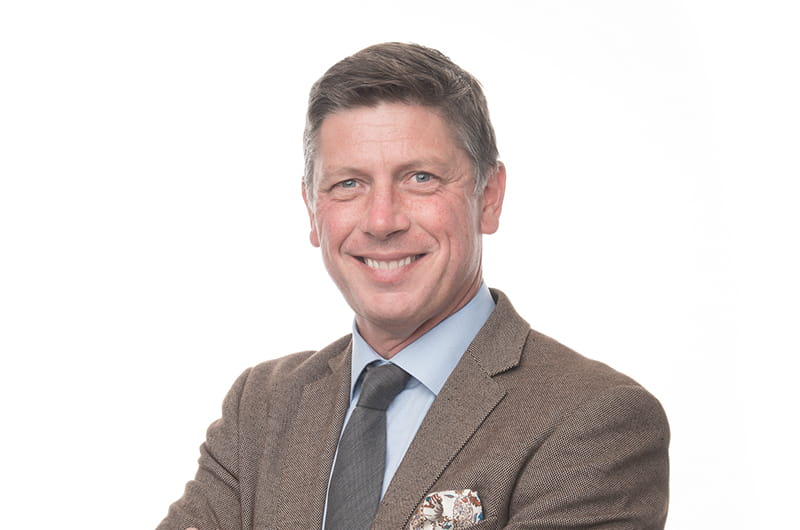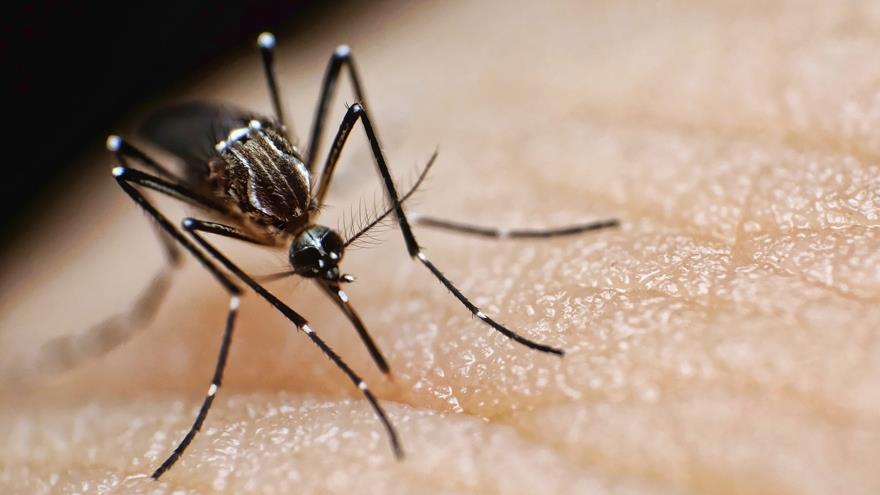Q&A: Scott Cooper, President and CEO of the Academy of Natural Sciences

Did you know there’s a new president and CEO of the Academy of Natural Sciences of Drexel University (ANS)? Meet Scott Cooper, PhD, who was named the new leader in November.
Cooper started in December and has been adjusting to a new museum, city and even country — he was born in England and came to Drexel from the Royal British Columbia Museum in Canada. Before that he worked in Qatar as the director of museums at the Qatar Foundation.
In this Q&A, Cooper discussed how his first three months on the job have gone and what he hopes the next years will bring for the Academy.
Q: To start off, can you tell me a little about your background?
A: I was raised in the industrial heartland of northern England, and from a young age I was desperate to escape and see the world. My way out was a high school expedition to the Udzungwa Mountains of eastern Africa. We gathered data for a speculative submission to the Tanzanian government to protect the forest as a national park and, against all odds, it was successful. I discovered at a young age not only a love for environmental conservation but a sense that individuals really can make a difference. It was an incredible experience.
My school did not offer environmental conservation courses, so I studied my second love: architectural conservation. I was interested in restoring historic buildings and pursued a master’s in architectural conservation and earned a PhD in architecture. I began restoring historic buildings and turning some of them into public museums, based on the funding source. I’ve also helped build museums from the ground up, then became enamored with operating a museum.
Q: What made you want to come to the Academy? How did you find out about the Academy?
A: When the position came up, I thought this looked like the sort of professional challenge and remarkable opportunity that I’d been looking for. It’s really a return to my previous historic restoration work, helping create amazing museums that society wants and needs. It also brings me back to my initial passion for environmental conservation. It’s full circle, really.
Q: How have your first couple of months been?
A: Busy! Frantic! But I wouldn’t change it for the world. It’s been incredibly exhilarating to be able to explore and understand a new country, a new city and two new amazing institutions: Drexel and the Academy of Natural Sciences. It’s been a joy so far.
Q: What are your goals for the Academy?
A: I want to implement a strategic plan that is generally inclusive. What I want is a process that unlocks the brain trust that we have in Drexel, in our board and in our staff that demonstrates the shared understanding of the problems we’re faced with and the shared ownership of solutions we seek to implement.
Museums in the U.S. have a challenge in today’s world with competition for people’s time and money. Museums must demonstrate that they are not merely worthwhile and worth the price of admission. Museums, including the Academy, need to demonstrate what makes them so distinctive and relevant. For the Academy that comes from its collections as distilled through the knowledge and experience of its scientific staff and education. And we now have Drexel — this extraordinary parent and partner that gives us untold fresh opportunity to explore. What does that represent? How does that dovetail with Drexel’s vision to become the most civically engaged university in the United States?
In understanding what the Academy does that is unique, we also need to understand what society wants and needs and what it is prepared to pay for. These are the ways we need to be thinking about ourselves and how we evolve. And in so doing we need to be clear about our own vision for the institution.
Personally, what I’d liked to see is a museum that has genuine, broad, societal value that is helping in real ways to change the world for the better. And the brilliant thing about our museum is that we are already working toward that. What we’ve done in the last few years that has been very transformative for the institution, and quite pioneering for a natural history museum. We’ve decided to focus on making our voices heard and our opinion known about four general fields of study: water, climate change, evolution and biodiversity and extinction. I’d like to see us build on that and become an institution with agency; an institution looking to affect positive environmental change in the world; an institution that fundamentally is a crucible for conversation; and a place that develops policy and knowledge.
And we can do that! I happen to believe that Philadelphia needs it. Philadelphia was conceived as a place that looked to include a common natural world, to create a better way of life for its inhabitants. How wonderful for a museum such as ours to help deliver a vision from which Philadelphia is the most environmentally engaged city in the United States. What role might we play in that?
Q: So I know you’re coming up with this strategic plan, but can you talk about the Academy as an educational resource?
A: I know we’re going to be even more of an educational voice. I know we’re going to be an institution that advocates. I know that we’re an institution that’s going to make our collections even more accessible.
We do wonderful work at the Academy, and another opportunity is online education. We’re going to look into supporting online education in schools, not just across Philadelphia and Pennsylvania, but around the world with our collections.
We can build on and share more widely our remarkable Women in Natural Sciences program, and also our formal learning programs that we deliver in partnership with schools. It is important to reach children at a young age so that science can be woven effortlessly into their learning and weigh into their sense of self. There also are wonderful opportunities to explore for retired people and seniors, including an expanded series of author talks or lectures on a particular subject.
I’m particularly interested in the citizen science movement. That’s something the Academy has done in the past and I’d like to see it embedded and woven more systematically through what we do. It’s a remarkable opportunity not just for citizen scientists but for the institution itself. You’ve got a world of people out there who are asking relevant research questions and are able and willing to contribute to the research itself. We want to engage them.
Q: What do you think the Academy’s role is as a cultural institution in Philadelphia?
A: It’s a place where everyone seems to have invested a little bit of themselves during the course of their life, either as children or as parents. Sometimes both. Everybody has a memory of the Academy. That has to be respected and understood. We must tread carefully on people’s dreams, to paraphrase Yeats. But we do need to move forward. That will flow from the strategic plan as we agree among ourselves what sort of museum society needs.
But in general, what I want to see is an institution that is — and this is vitally important — accessible for as diverse a variety of Philadelphians as possible. A place with a really powerful proposition that has people coming to visit not just once, but again and again. We are a place where people can refine their sense of self and the world they occupy. That’s something that you should feel has relevance toward you and can be accessible to you whenever you want it. How do we do that?
We want to make the Academy more accessible, but for that we have to make it more relevant to wider audiences. As we move toward that goal, we need to ensure it’s a place that holds on to our mission while becoming more community focused and more inclusive. Over the last decade, some libraries have reimagined themselves this way and become quite successful.
Q: Can you talk about the Academy’s relationship with Drexel? Where do you see it going?
A: I see it as essential to the Academy’s revitalized sense of self. It’s a relationship that still has much low-hanging fruit to bear and I’d like to start picking up as much as possible with my colleagues and deans to explore areas of genuine and sustainable mutual benefit. It can be a place where we can sell product designs, a place where we can showcase digital or marketing work made by students and a home for museum co-ops and science co-ops. We’re already doing some of this. We can add value to many of our schools and colleges throughout Drexel.
Q: Okay, last question — and this might be easy, or maybe not. What is your favorite exhibit or collection at the Academy?
A: That’s a good question! You can’t really have a favorite child. I’m only now getting any sort of intimate understanding of the collections. I think it’s a slow process to understand them. Every time I go into a collection I’m blown away by the passion and expertise of those who manage and curate it. Most recently, I spent time in our invertebrate paleontology collection and it was truly remarkable to learn what we have. It’s always a joy to walk through the malacology section. And then there is the public museum itself, with the mighty T. rex and those beautiful live butterflies and live animals that greet our visitors every day. But I’m afraid I have to dodge that question, really. I don’t have any favorites. I’m learning them all and the more I learn about each one, the more I love them.
This story was published in the spring 2018 issue of Drexel Quarterly.In This Article
Drexel News is produced by
University Marketing and Communications.

